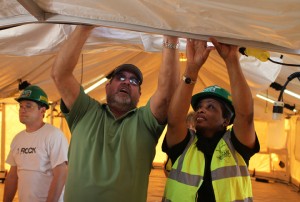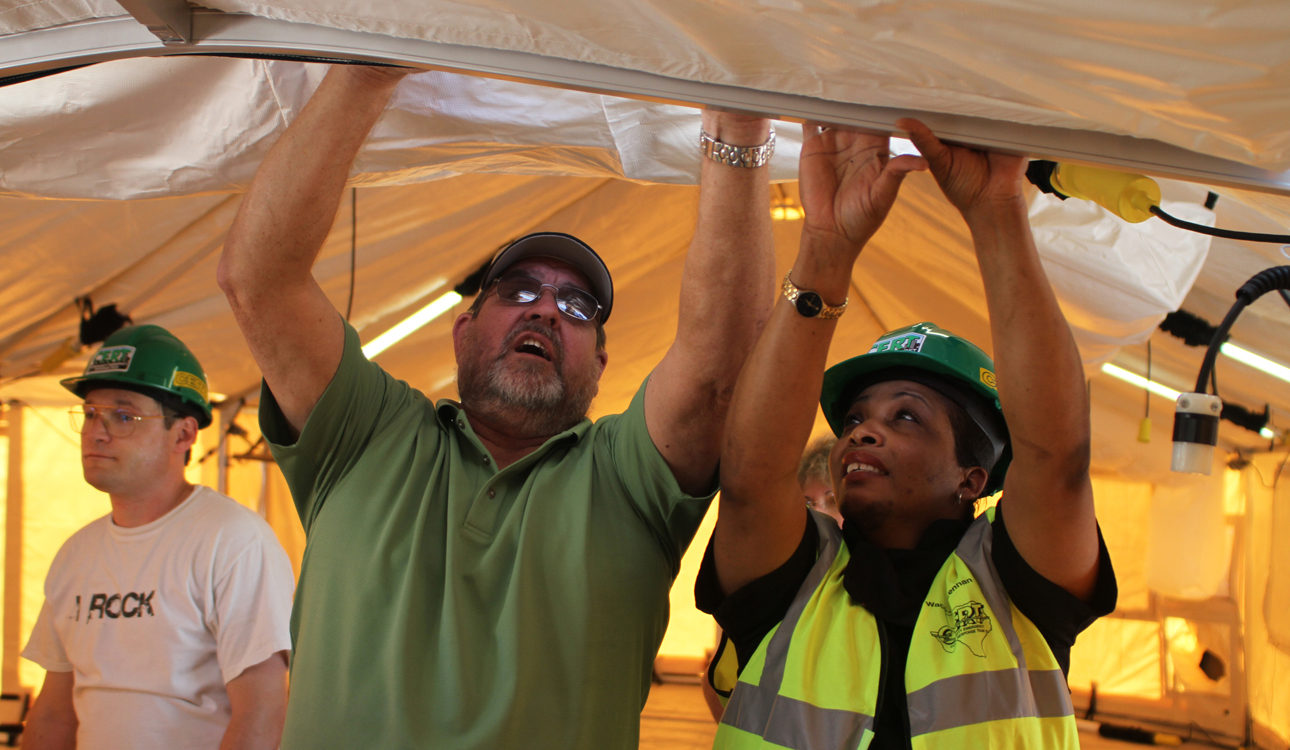
Providence Hospital employees run drills and set up tents in preparation for emergency situations in which the main hospital building cannot handle a large influx of patients at one time.
By Jade Mardirosian
Staff writer
The Heart of Texas Regional Advisory Council, along with other regional emergency response teams, conducted an exercise designed to practice running a regional alternate care site response Wednesday at the Providence Health Center in Waco.
An alternate care site is a location where patients can be directly treated or triaged, assisting hospitals in the event of an influx of patients.
The exercise tested the communications and setup of the care site, which will be used in the event of an emergency. The emergency situation being tested was a pandemic flu event that would result in area hospitals being overwhelmed with patients. David Pruitt, the public information officer in charge of the site, said the practice of creating an alternate care site such as this one is important.
“We find out what the critical failures are going to be,” Pruitt said. “When we look at stuff that progresses past an operational period we need to rehearse these things.”
Pruitt said any numbers of things can go wrong when there is a need to set up a site like this. Many people would be involved, and they would all have to be trained and know how to erect the tents and equipment.
“We have so many different players and languages, not just languages like English and Spanish, but different terminology and backgrounds, so every time we practice we move closer to being on the same page,” Pruitt said. “What we know to be fact is when it is a critical moment and we’re as close to the same page as we can be, we see success so that’s why we rehearse and train. That is the only way to do it.”
The alternate care site consists of a series of field hospital-type tents made of plastic so they can easily be sterilized or cleaned, trailers with control units and other equipment and medical machinery.
Pruitt said alternate care sites are most commonly used in the event of a natural disaster.
“As we look at the current situation in Japan, that is a natural disaster. It is probably the most common event that would create this,” Pruitt said.
“We have used shelter situations like this throughout the hurricane affected areas which we are a part of. If people are isolated enough we would bring this in.
“Where we see the biggest use of a component like this would be in those affected areas that are challenged by geography.”
Several agencies from Bosque, Falls, Freestone, Hill, Limestone, and McLennan counties teamed up to execute the practice exercise.
The agencies included the County Emergency Management Coordinators, Waco-McLennan County Public Health District, Heart
of Texas Council of Governments and local EMS and hospitals.
Christine Reeves, executive director of the Heart of Texas Regional Advisory Council, was in charge of organizing the exercise and said a lot was learned from the exercise.
“We exercise so that what we do learn, the next time we exercise, we make sure to fix those issues,” Reeves said. “You want when it happens for it to be natural. You want it to be habit.”
Reeves said another exercise like this one will most likely take place next fall in which actual volunteer patients will be used.
The Heart of Texas Regional Advisory Council is a nonprofit organization that assists EMS providers and hospitals with development of trauma and emergency systems for Bosque, Falls, Hill, Limestone and McLennan counties.






